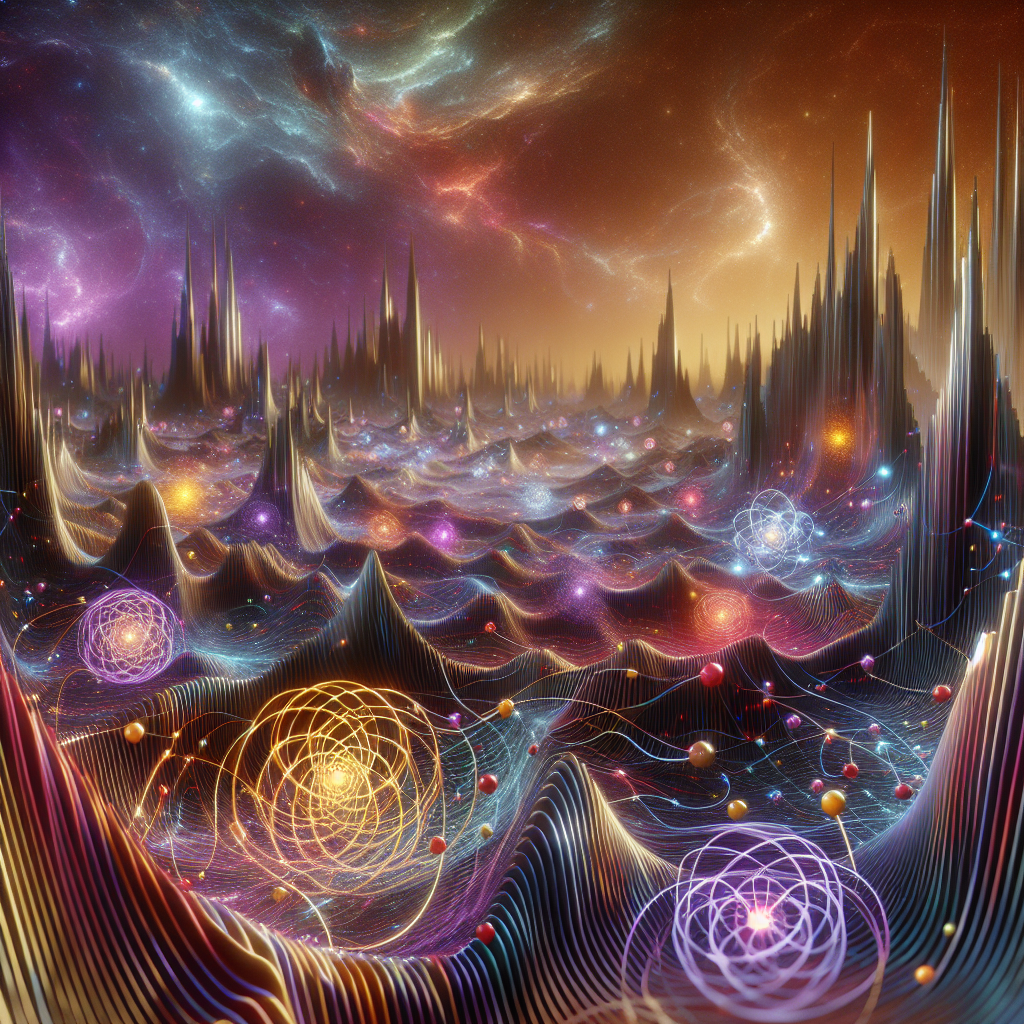Science
New Insights Uncover Quantum Landscape Distorting Electron Behavior

In a significant advancement in quantum physics, researchers are revealing a hidden quantum landscape that distorts electron behavior. This exploration sheds light on the complex interactions between electrons and their environments, which are fundamental to understanding matter and developing innovative technologies.
At the core of this research is the realization that electrons do not exist in isolation. Instead, they are influenced by a multidimensional “quantum landscape” shaped by electromagnetic forces and interactions with other particles. This landscape consists of various potential energy surfaces that dictate how electrons behave under different conditions. As charged particles, electrons exhibit duality, behaving as both particles and waves, which often results in non-intuitive behaviors that challenge classical physics.
The Dynamic Quantum Landscape
The term “quantum landscape” encapsulates the intricate web of forces affecting electrons. This landscape features potential wells and barriers that determine electron trajectories and energies. The malleability of this landscape is particularly noteworthy, as external influences, such as electric and magnetic fields, can alter electron behavior significantly. Recent advancements in experimental techniques, including scanning tunneling microscopy (STM) and atomic force microscopy (AFM), have enabled researchers to visualize these distortions at the atomic level, providing unprecedented insights into electron movement through materials.
For instance, in materials with complex nanostructures, localized electric fields can create variations strong enough to substantially change electronic properties. These insights are crucial for understanding phenomena such as superconductivity, magnetism, and electronic phase transitions, which are pivotal for the advancement of electronic devices.
The Fascinating Phenomenon of Quantum Tunneling
One of the most intriguing aspects of the quantum landscape is the phenomenon known as quantum tunneling. In classical physics, particles cannot surpass a potential energy barrier that exceeds their energy. However, in the quantum realm, electrons can “tunnel” through these barriers due to their probabilistic wavefunction.
This tunneling is influenced by the shape and characteristics of the quantum landscape. As researchers delve deeper into understanding the conditions that facilitate or hinder tunneling, they uncover applications that span from quantum computing to nanotechnology. In these fields, tunneling plays a critical role in operations at scales that defy conventional mechanics.
Recent studies have made significant strides in mapping this hidden quantum landscape, demonstrating how electrons respond to their environments. By manipulating the quantum landscape at the nanoscale, scientists are developing new materials with tailored electronic properties. For example, two-dimensional materials like graphene and transition metal dichalcogenides (TMDs) have become key areas of exploration for their unique electronic behaviors in response to external fields.
Looking ahead, future research will likely focus on integrating these advanced materials into practical quantum devices. As the understanding of the quantum landscape deepens, researchers anticipate uncovering further intricacies that could lead to groundbreaking innovations in material science and quantum engineering.
The ongoing exploration of the quantum landscape that distorts electrons represents a vital frontier in modern physics. As scientists unveil the complexities of these interactions, the implications for technology, energy, and our understanding of matter are set to be profound and transformative. This research not only enhances our grasp of fundamental physics but also paves the way for practical applications that could revolutionize various fields.
-

 Science2 months ago
Science2 months agoInventor Achieves Breakthrough with 2 Billion FPS Laser Video
-

 Health2 months ago
Health2 months agoCommunity Unites for 7th Annual Into the Light Walk for Mental Health
-

 Top Stories2 months ago
Top Stories2 months agoCharlie Sheen’s New Romance: ‘Glowing’ with Younger Partner
-

 Entertainment2 months ago
Entertainment2 months agoDua Lipa Aces GCSE Spanish, Sparks Super Bowl Buzz with Fans
-

 Health2 months ago
Health2 months agoCurium Group, PeptiDream, and PDRadiopharma Launch Key Cancer Trial
-

 Top Stories2 months ago
Top Stories2 months agoFormer Mozilla CMO Launches AI-Driven Cannabis Cocktail Brand Fast
-

 Entertainment2 months ago
Entertainment2 months agoMother Fights to Reunite with Children After Kidnapping in New Drama
-

 World2 months ago
World2 months agoIsrael Reopens Rafah Crossing After Hostage Remains Returned
-

 Business2 months ago
Business2 months agoTyler Technologies Set to Reveal Q3 Earnings on October 22
-

 World2 months ago
World2 months agoR&B Icon D’Angelo Dies at 51, Leaving Lasting Legacy
-

 Health2 months ago
Health2 months agoNorth Carolina’s Biotech Boom: Billions in New Investments
-

 Health2 months ago
Health2 months agoYouTube Launches New Mental Health Tools for Teen Users









